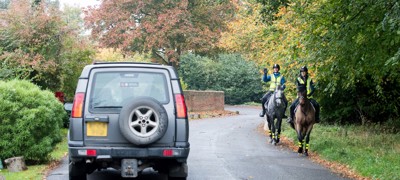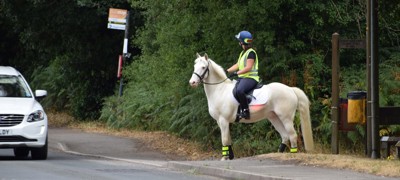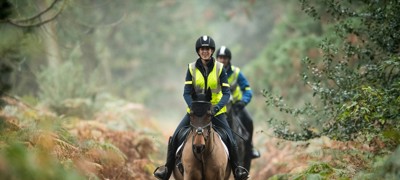It is essential that your hat is secured and fits properly; since every head is shaped differently, you may need to try a few to find the perfect one for you.

What to consider when buying your hat
- The BHS always recommends you go to a reputable tack shop and have a new hat fitted by somebody who has appropriate British Equestrian Trade Association (BETA) training and is therefore a certified hat fitter.
- While it can be tempting to go for a second-hand hat, we advise against this as it’s impossible to see any damage with the naked eye.
- Make sure you measure up before going out to buy your new hat.
- Your hat should also have a quality assurance mark fastened alongside the label that shows which standard the hat is tested to. Any standard hat with a Quality Assurance Mark (such as a BSI Kitemark or an SEI mark) can be viewed as safer than a hat to the same standard without (statement taken from BETA ‘What to Wear’ publication).
- Be aware that hats designed for children can be a different shape to those designed for adults, even if they are the same brand. Always have your head measured and hat fitted properly when buying a new one to check it is the best shape for you.
Whether you choose a fancy, top of the range hat or a plain, less expensive one it does not matter – the main thing is that it meets one of the accepted standards.
You only have one head – keep it as safe as you can and wear a fitted hat that is fastened each and every time you ride.
Tips on caring for your riding hat
- Protective properties of hats can reduce if left for long periods in direct sunlight so try to avoid leaving it exposed to the sun
- Let it dry naturally if it gets wet; don’t use a radiator to dry it as this can affect the protective properties within the structure of the hat
- Handle your hat carefully - every time it’s dropped or receives any impact, the protective properties of the hat can be lessened
- Remember to replace your hat after a fall, especially if your hat comes into contact with the ground
Safety on the road
Rule 49 of the Highway Code states:
Safety Equipment: Children under the age of 14 must wear a helmet which complies with the regulations. It must be fastened securely. Other riders should also follow this advice. (LAW H (PHYR)R).
Children of the Sikh religion are exempted while they are wearing a turban. We do advise to offer the option of wearing a riding hat and explaining the associated risks when horse riding as well as signing a declaration of Acceptance of Risk and Indemnity if the turban is worn.
Find out more about riding on the road.
For more information, contact the BHS Safety Team on 02476 840516 or safety@bhs.org.uk.
Competitions and events
Riders competing under the rules of an equestrian discipline, the Pony Club or British Riding Clubs should refer to their respective rule books to check which standards are acceptable under their specific rules.
For more information, contact the relevant discipline or event organiser for guidance on their competition requirements.





